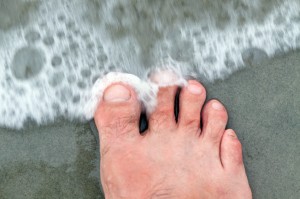We all want to know how to achieve balance in our work-life spheres, hoping that when we do, we will be able to move smoothly between work and life activities. While some have criticized the balance metaphor, Michael Hyatt, in a recent blog post titled What No One Ever Told You About Work-Life Balance, challenged the “magic bullet” misconceptions about balance and reframed the metaphor by drawing on the physical attributes of balance. Michael Hyatt wrote:
“When we were balanced, it never really felt like we were. Our legs constantly moved and wobbled, and we strained to grip each other and the nearest tree. But we stayed on that line a long time, making little corrections, adjusting our weight, and trying to stay upright. It didn’t feel like balance, but it was.” (para. 3)
For me, work-life balance has conjured images of a weighted scale with work on one side and life on the other. The goal, as I understood it, was to bring the “weight,” measured in time, energy, and resources, into balance for each side of the scale. Based on this image, I would have to agree with the critics: work-life balance is a myth.
However, Michael Hyatt’s description of balance as a place of dynamic movement to stay upright fits the constant adjustments and corrections that occur daily between work and life. In short, balance is not a place of static rest or blessed equilibrium; instead, it is a shifting and often unstable place that requires the full engagement of our minds and muscles to maintain.
As I contemplated the ways our bodies sway to compensate for forces that would tip us over, I remembered the importance of the big toe. Each foot has 26 bones to create all the moving parts that play a major role in allowing us to stand, walk, and even run. To accomplish these feats, the foot must be able to handle three key components: pressure, balance, and propulsion. Interestingly, it is the big toe that makes a significant difference in all three areas.
1. Pressure: The entire foot must be able to handle the weight of the body and absorb the force of landing when walking or running. According to Corey Binns for Scientific America, “The big toe carries the most weight of all the toes, bearing about 40 percent of the load” (para. 2). Between body weight, gravity, and the impact of taking steps, there is a lot of pressure riding on the big toe as it keeps us standing and moving.
2. Balance: While losing a big toe won’t keep you from walking (or even running), it will require your feet and other muscles to compensate for the loss (Binns). Researchers found the big toe had a significant impact on the ability to balance on one leg as well as maintain directional control when moving forwards and backwards (Cheng, Lin, Chou, Ju, Lin, & Wong). Even limiting the big toe’s ability to move and make adjustments will impair the person’s balance.
3. Propulsion: As the biggest and strongest toe as well as the last toe to leave the ground, the big toe is most responsible for propelling us forward when we walk or run. Brittney Doran explains, “When the leg is pulled back the muscles and tendons of the big toe and arch act like a rubber band of sorts” (para. 4). Our forward movement is largely dependent on the big toe’s ability to handle the pressure, stabilize our balance, and push off the ground to keep us going.
I see parallels between the work of the big toe and the way we manage our work-life spheres. We often feel the pressure of competing expectations, deadlines, and needs. We have to be able to handle the weight of the responsibilities we carry and distribute it in a way that allows us to stay balanced.
Keeping our balance is all about making adjustments when we need to in order to compensate for shifts, weights, and other factors that would tip us over. Finally, the goal of work-life balance is to enable forward movement in each sphere. Whether we are working toward a promotion in our career or building stronger family relationships, the key is to maintain fluid motion toward the values that are important to us.
Tell us about what work-life balance means to you by sharing your thoughts in the comments below. How do you manage your work-life spheres?
References
Binns, C. (2007, May 3). Fact or Fiction?: No Big Toe, No Go: A missing toe will keep you out of the armed services, but will it keep you off your feet? Scientific American. Retrieved from http://www.scientificamerican.com/article/no-big-toe-no-go/
Cheng, H. K., Lin, C., Chou, S., Ju, Y., Lin, Y., & Wong, M. (n.d.). The importance of the great toe in balance performance. Retrieved from http://research.cgu.edu.tw/ezfiles/14/1014/img/652/96-B-007.pdf
Doran, B. (2011, December 4). The big ta-do about the big toe. Head to Toe Spine & Sports Therapy. Retrieved from http://head2toeclinic.com/blog/?p=300
Hyatt, M. (2014, July 14). What no one ever told you about work-life balance. Retrieved from http://michaelhyatt.com/what-no-one-ever-told-you-about-work-life-balance.html
